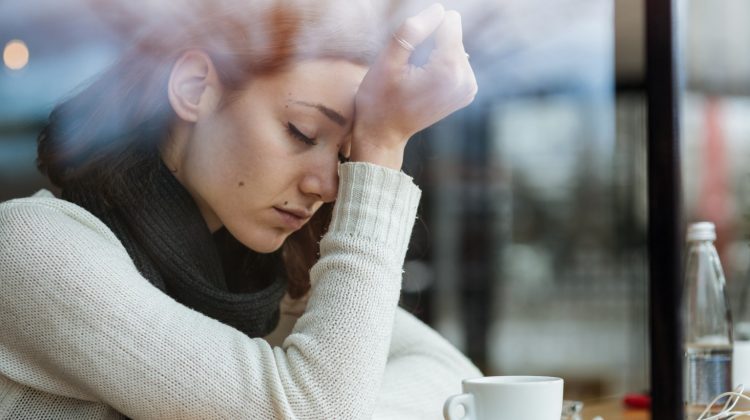To be mentally healthy is to be in a state of emotional, psychological, and social well-being. The quality of our mental health impacts how we think, feel, and act, and it determines how we relate to others, how we handle the various stressors in our lives, and the choices we make.
Mental illness is not the same thing as mental health; instead, mental illness refers to conditions that affect our ability to function because of its impact on our mood or behavior. When we chronically struggle with anxiety, depression, or other condition that affects thinking, behavior, mood, or thought processes, it can clearly disrupt our lives.
The Connection Between Mental and Physical Health
Mental and physical health are intricately related, and both are important in maintaining a healthy lifestyle. Mental illness, depression in particular, can certainly increase the risk for many physical health problems, but chronic pain and other health problems can also increase the risk for mental illness.
We all hear about the importance of caring for ourselves physically; few would dispute the importance of getting enough exercise, eating a healthy diet, or a good night’s sleep. When it comes to the topic of mental health, however, the conversation all too often comes to a quick halt. Choosing to neglect our emotional wellbeing, however, can take both a psychological and a physical toll on the body and brain.
Mental Health: A Poorly Understood Issue
While mental health is an issue that concerns all of us, there is still an incredible lack of understanding concerning the topic, and for that reason, far too many suffer needlessly. In fact, less than half of those struggling with a mental illness will seek help, for the most part due to the stigma surrounding it.
According to a World Psychiatry paper, people who wrestle with mental health issues often begin to believe the deep-rooted, false stereotypes associated with their condition. For this reason, far too many refuse to seek treatment or try to avoid dealing with it altogether.
Additionally, most people simply don’t understand the problem. They don’t ask the right questions of the right people and suffer alone. They either deny they or their loved one has a problem or think they can handle on their own, and the problem continues.
Mental Illnesses are Common
- In the United States alone, over 17 million people have experienced at least one episode of major depression
- Over 19% of adults living in the U.S. (48 million people) are living with an anxiety disorder
- An estimated 9 million people live with PTSD
- General Anxiety Disorder (GAD) affects 6.8 million adults, or 3.1% of the U.S. population, yet only 43.2% are receiving treatment
- Panic Disorder affects 6 million adults, or 2.7% of the U.S. population
- Depression in senior adults affects between 4.6 to 9.3% of those over the age of 75
- Social Anxiety Disorder affects 15 million adults, or 6.8% of the U.S. population, is equally common among men and women, and typically begins around age 13
Children are at risk for mental health problems also:
- Approximately 6.1 million children (9.4% of children aged 2-17 years) have received an ADHD diagnosis
- Nearly 4.5 million (7.4% of children aged 3-17 years) have a diagnosed behavior problem
- Approximately 4.4 million (7.1%) of children aged 3-17 years have diagnosed anxiety
- Nearly two million children have diagnosed depression
- Chronic sleep problems plague 50% to 80% of patients struggling with mental health issues
- Suicide is the third leading cause of death in adolescents and young adults age 15-24
According to the National Alliance on Mental Illness:
- 19.1% of U.S. adults (1 in 5) experienced mental illness in 2018 (47.6 million people).
- 4.6% of U.S. adults (1 in 25) experienced serious mental illness in 2018 (11.4 million people).
- 16.5% of U.S. youth aged 6-17 experienced a mental health disorder in 2016 (7.7 million people)
- 3.7% of U.S. adults (9.2 million people) experienced a co-occurring substance use disorder and mental illness in 2018
- <1% (estimated 1.5 million people) suffer from Schizophrenia
- 8% (estimated 7 million people) Bipolar Disorder
- 2% (estimated 3 million people) Obsessive Compulsive Disorder (OCD)
- 4% (estimated 3.5 million people) Borderline Personality Disorder
- 50% of all lifetime mental illness begins by age 14, and 75% by age 24
- Suicide is the 2nd leading cause of death among people aged 10-34
- The overall suicide rate has increased 31% since 2001
How Prevalent is the Problem?
According to Johns Hopkins Medicine, an estimated 26% of Americans ages 18 and older – approximately 1 in 4 adults – suffers from a diagnosable mental disorder in a given year. Many suffer from more than one, as depression and anxiety, for example, tend to co-occur.
Mental Health in America Prevalence Data of all mental illness ranked states in the U.S. from low to high and found that state prevalence of adult mental illness ranged from 16.19% in New Jersey to 25.03% in Idaho.
The 6 measures that make up the Prevalence Ranking include:
1. Adults with Any Mental Illness (AMI)
2. Adult with Substance Use Disorder in the Past Year
3. Adults with Serious Thoughts of Suicide
4. Youth with At Least One Major Depressive Episode (MDE) in the Past Year
5. Youth with Substance Use Disorder in the Past Year
6. Youth with Severe MDE
A ranking 1-13 for Prevalence indicates a lower prevalence of mental health and substance use issues compared to states that ranked 39-51.
Effects of Stress and Anxiety on the Body and Brain
While stress and anxiety aren’t the same thing, the effects of stress and anxiety will clearly affect your body and brain negatively. Symptoms can include:
- Nervousness, restlessness, or being tense
- Feelings of danger, panic, or dread
- Rapid heart rate
- Rapid breathing, or hyperventilation
- Increased or heavy sweating
- Weakness and lethargy
- Difficulty focusing or concentrating
- Insomnia
- Digestive or gastrointestinal problems
- Avoidance of things that trigger your anxiety
- Obsessions about certain ideas
- Anxiety surrounding a particular life event or experience that has occurred in the past
Effects of Depression on the Body and Brain
Major depression can have a serious impact on the body and brain. Some of the symptoms of depression can include:
- Persistent feelings of sadness and hopelessness
- Loss of interest in activities you normally enjoy
- Difficulty sleeping or sleeping too much
- Weight gain or weight loss
- Extreme fatigue
- Anxiety, restlessness, frustration, or irritability
- Feeling worthless, guilty, or ashamed
- Difficulty concentrating, making decisions, or remembering
- Thoughts of suicide and death
Common Causes of Mental Illness
- Early adverse life experiences
- Trauma
- Ongoing chronic medical conditions
- Substance abuse
- Genetic factors
- Social isolation
Barriers to Help-Seeking
When we stop and consider the cost of not addressing chronic physical health conditions like high blood pressure, heart disease, or diabetes, we know that seeking treatment or encouraging our loved ones to do so is clearly the best course of action. When it comes to someone dealing with chronic anxiety, depression, or relational distress, though, the rules seem to change. Research clearly shows, however, that living with these conditions can seriously impact our ability to effectively function at home, work, school, and every other area of our lives.
Poor mental health can lead to significant emotional and physical disability, including a host of health conditions such as arthritis, high blood pressure, digestive issues, shortness of breath, chest pain, back pain, headaches, dizziness, chronic pain, and more. In short, Niles and O’Donovan who studied the effects of depression and anxiety on physical health, found that anxiety and depression were as predictive of poor future physical health as obesity and smoking. “Those living with high levels of anxiety and depression were 65% more likely to develop a heart condition, 64% more likely to have a stroke, 50% more likely to develop high blood pressure, and 87% more likely to have arthritis than people who did not have anxiety or depression” (Niles & O’Donovan, 2019).
Stigma Still a Major Problem
Stigma surrounding mental illness certainly creates barriers to help seeking.
Some of the harmful effects of stigma can include:
- Shame
- Reluctance to seek help or treatment
- Lack of understanding by family, friends, co-workers, or others
- Fewer opportunities for work, school or social activities
- Harassment
- Self-doubt
Faulty beliefs are also a huge barrier to treatment seeking:
- I’ll just wait it out – it will go away on its own
- People will think I’m weak if I ask for help
- No one will understand, no one can help
- My life/career/reputation will be ruined if anyone finds out
Making Mental Health a Priority
Taking care of ourselves emotionally is vital. Unless we make mental health a priority, we won’t have the emotional wherewithal to take care of ourselves physically. Sometimes making even small changes can make a big difference. Start small and work your way up. Positive change can pay off in all aspects of life, boost mood, build resilience, and result in overall enjoyment of life.
Treatment
Cognitive-behavioral therapy (CBT) is used to treat depression, anxiety, as well as a host of other conditions.
Medication. Some people may be benefit from a class of medication called selective serotonin reuptake inhibitors (SSRI) while others may need anxiolytics to help treat their condition. Research does show, however, that medication is more effective in conjunction with talk therapy.
Relaxation techniques help people develop the ability to cope more effectively with the stresses that contribute to poor mental health and pain. Common techniques include breathing retraining, progressive muscle relaxation, and exercise.
Complementary and alternative treatment. Yoga, acupuncture, and massage are among the complementary and alternative techniques that have been found helpful.
Finding a mental health professional who treats these conditions can make all the difference.
Lifestyle
Positive lifestyle changes can help relieve the symptoms of anxiety and depression, increase your energy level, and improve sleep. Having regular positive social interaction is important. Don’t isolate, and find those who are supportive when you need someone to talk to. Research shows that social isolation is a risk factor for both mental and physical illness.
Exercise. Regular exercise not only strengthens muscles, it can reduce stiffness, improve flexibility, and boost mood and self-esteem. Always check with your doctors before beginning an exercise regimen.
Sleep. A good night’s sleep is key for good mental and physical health. Chronic sleep problems plague up to 80% of patients struggling with mental health concerns. Good sleep hygiene – consistent sleep and wake times, a good sleep environment, and avoiding caffeine late in the day and at night can help promote restful sleep.
Nutrition. Diet definitely plays a role in mental health. Those who struggle with anxiety, for example, will want to limit or avoid caffeine and alcohol, which can trigger panic attacks and worsen symptoms of anxiety. Others may notice that certain types of food may aggravate other symptoms, including dairy products, gluten (found in wheat, oats, barley, and rye), corn, sugar, and members of the nightshade family (potatoes, tomatoes, eggplant, peppers, and tobacco). Pay attention to how what you eat – or forget to eat – makes you feel and go from there.
Resources
Anxiety and Depression Association of America. (2018). Facts and statistics. https://adaa.org/about-adaa/press-room/facts-statistics
Bracke, P., Delareulle, K., & Varhaeghe, M. (2019). Dominant cultural and personal stigma beliefs and the utilization of mental health services: A cross-national comparison. Frontiers in Sociology. https://www.frontiersin.org/articles/10.3389/fsoc.2019.00040/full
Bashore, J. (2013). Reduced brain connections seen in people with generalized anxiety disorder. https://anxietynetwork.com/reduced-brain-connections
CDC. (2018). Learn about mental health. https://www.cdc.gov/mentalhealth/learn/index.htm
Conner, E.A. (2017). Under addressed and overlooked: The mental health issue. https://www.healthify.us/healthify-insights/under-addressed-and-overlooked-the-mental-health-issue
DeYoung, D. (2018). The critical role nutrition plays in mental health. Psych Central. https://psychcentral.com/blog/the-critical-role-nutrition-plays-in-mental-health/
Harteneck, P. (2019). 10 things you can do to improve your mental health every day. https://www.seleni.org/advice-support/2018/3/21/10-things-you-can-do-to-improve-your-mental-health-every-day
Harvard Health Publishing. (2019). Sleep and mental health: Sleep deprivation can affect your mental health. https://www.health.harvard.edu/newsletter_article/sleep-and-mental-health
Help Guide. (2019). The mental health benefits of exercise. https://www.helpguide.org/articles/healthy-living/the-mental-health-benefits-of-exercise.htm
High Watch Recovery. (2019). Why don’t people seek help for mental illness? https://highwatchrecovery.org/why-dont-people-seek-help-for-mental-illness/
Johns Hopkins Medicine. (2020). Health: Mental health disorder statistics. https://www.hopkinsmedicine.org/health/wellness-and-prevention/mental-health-disorder-statistics
Knaak, S., Mantler, E., & Szeto, A. (2017). Mental illness-related stigma in healthcare. Healthcare Management Forum, 30(2), 111-116. https://www.ncbi.nlm.nih.gov/pmc/articles/PMC5347358/
Medical News Today. (2019). How do anxiety and depression affect physical health? https://www.medicalnewstoday.com/articles/324030.php#4
Medical News Today. (2019). What does anxiety feel like and how does it affect the body? https://www.medicalnewstoday.com/articles/322510.php#symptoms
Mental Health America. (2020). Mental health in America – Prevalence data. https://www.mhanational.org/issues/mental-health-america-prevalence-data#two
MQ: Transforming Mental Health Through Research. (2020). Four ways our physical health could be impacted by our mental health. https://www.mqmentalhealth.org/posts/4-ways-our-physical-health-could-be-impacted-by-our-mental-health
NAMI. (2018). How easy it is to neglect your mental health. https://www.nami.org/Blogs/NAMI-Blog/December-2018/How-Easy-it-is-to-Neglect-Your-Mental-Health
National Alliance on Mental Illness. (2019). Mental health by the numbers. https://www.nami.org/learn-more/mental-health-by-the-numbers
National Institute of Mental Health. (2019). Chronic illness & mental health. https://www.nimh.nih.gov/health/publications/chronic-illness-mental-health/index.shtml
Newman, K.M. (2019). Mind & body: What is the best diet for mental health? Greater Good Magazine: Science Based Insights for a Meaningful Life. https://greatergood.berkeley.edu/article/item/what_is_the_best_diet_for_mental_healthNiles, A.N., &
Niles, A.N., & O’Donovan, A. (2019). Comparing anxiety and depression to obesity and smoking as predictors of major medical illnesses and somatic symptoms. Health Psychology, 38(2), 172–181. https://doi.org/10.1037/hea0000707 https://psycnet.apa.org/record/2018-63710-001
Salaheddin, K., & Mason, B. (2016). Identifying barriers to mental health help-seeking among young adults in the UK: A cross-sectional survey. https://www.ncbi.nlm.nih.gov/pmc/articles/PMC5033305/
Senior Report. (2019). Depression – Seniors. https://www.americashealthrankings.org/explore/senior/measure/depression_sr/state/ALL
World Health Organization. (2020). Adolescent mental health. https://www.who.int/news-room/fact-sheets/detail/adolescent-mental-health




No Comment